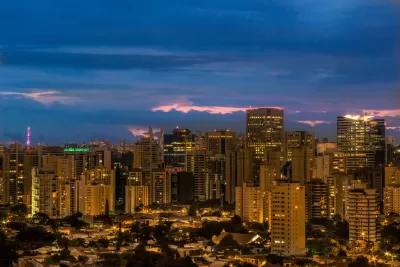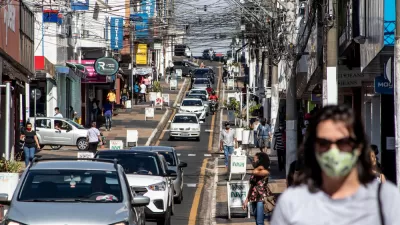Facing an ever expanding shortage of affordable housing and growing inequality, São Paulo's new master plan hopes to change the face of the city.

Catesby Holmes of Next City reports on what might be the legacy of São Paulo Mayor Fernando Haddad, who faces a difficult re-election campaign. With a housing shortage of between 100,000 and 500,000 housing units, the mayor is betting on a long-term strategy to create 717,000 housing units by 2030, with 244,000 of those being allocated for affordable housing.
For its proponents, the master plan, or “plano diretor,” has the potential to change São Paulo’s urban design “in a revolutionary way,” Haddad told the BBC. “Today, private investment does whatever it wants in the city,” he added. “It builds where it wants. It destroys neighborhoods, creates pockets of skyscrapers and overloads urban infrastructure.”
The master plan will designate areas within the city—mostly those served by transit infrastructure—for increased density, with development incentives such as additional height, in return for inclusion of low-income housing. As Holmes reports, however, the plan has sparked concern from wealthier residents about the intrusion of low-income people into their communities.
FULL STORY: São Paulo Is Betting Better Urban Planning Can Solve a Housing Crisis

Alabama: Trump Terminates Settlements for Black Communities Harmed By Raw Sewage
Trump deemed the landmark civil rights agreement “illegal DEI and environmental justice policy.”

Study: Maui’s Plan to Convert Vacation Rentals to Long-Term Housing Could Cause Nearly $1 Billion Economic Loss
The plan would reduce visitor accommodation by 25% resulting in 1,900 jobs lost.

Why Should We Subsidize Public Transportation?
Many public transit agencies face financial stress due to rising costs, declining fare revenue, and declining subsidies. Transit advocates must provide a strong business case for increasing public transit funding.

Paris Bike Boom Leads to Steep Drop in Air Pollution
The French city’s air quality has improved dramatically in the past 20 years, coinciding with a growth in cycling.

Why Housing Costs More to Build in California Than in Texas
Hard costs like labor and materials combined with ‘soft’ costs such as permitting make building in the San Francisco Bay Area almost three times as costly as in Texas cities.

San Diego County Sees a Rise in Urban Coyotes
San Diego County experiences a rise in urban coyotes, as sightings become prevalent throughout its urban neighbourhoods and surrounding areas.
Urban Design for Planners 1: Software Tools
This six-course series explores essential urban design concepts using open source software and equips planners with the tools they need to participate fully in the urban design process.
Planning for Universal Design
Learn the tools for implementing Universal Design in planning regulations.
Smith Gee Studio
Alamo Area Metropolitan Planning Organization
City of Santa Clarita
Institute for Housing and Urban Development Studies (IHS)
City of Grandview
Harvard GSD Executive Education
Toledo-Lucas County Plan Commissions
Salt Lake City
NYU Wagner Graduate School of Public Service




























